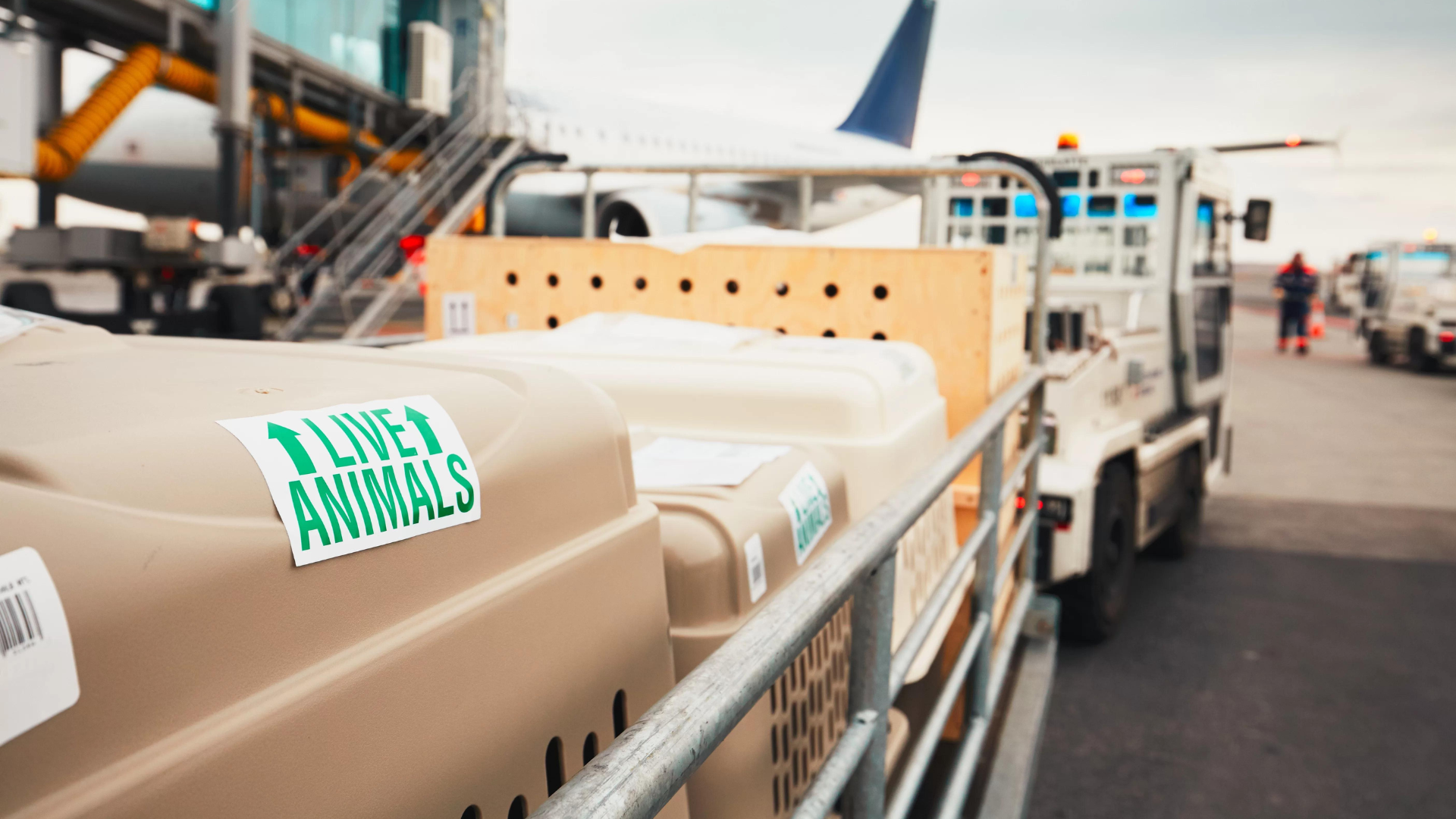
Pet Shipping Air Cargo
Pet transport via air cargo may seem like the efficient, pain-free way to relocate a furry pal. However, more and more airlines (even airlines that have specific departments that cater to air cargo pet shipping) are adding more and more restrictions that make it close to impossible to transport your pet air. Here are some of the restrictions we are seeing:
- Bans on specific breeds or mixes thereof – your pet may not be able to fly if it appears to be a breed such as a Pit Bull, German Shepherd Dog, Presa Canario, and Cane Corso. Even if your USDA health certificate shows it is not of these breeds, it can be at the discretion of the airline whether your pet is permitted to fly or not.
- Enclosure restrictions on breeds – your restricted breed may be able to fly, but only in a very expensive reinforced IATA CR82 compliant crate if it is over a specific weight threshold – usually about 20 lbs (9 kg). These steel, aluminum, or wood crates can be purchased for about $650 for a small pet (up to $1,500 for a larger pet). They also add a good amount of weight to the calculation of the shipping rate – which makes shipping your dog very costly.
- Short-nosed (flat-faced) brachycephalic dog and cat breed restrictions – if you have a breed such as a French Bulldog or a Persian cat, airlines may not allow them to fly. Some breeds may be allowed to fly if a larger kennel/crate is used and an acclimation statement endorsed by a USDA vet is present. Some short-nosed breeds are not permitted to fly at all. These breeds are considered susceptible to an increased risk of heat stroke and breathing problems when exposed to extreme stress or extreme temperatures. So really regardless of the airline policy, enough injury or deaths have occurred with these breeds that I would honestly say it may not be safe to fly them.
- Temperature restrictions – some airlines will only fly pets in cargo specific months of the year due to high or low temperatures. They may still allow pets in the cabin if they do not exceed 20 lbs and are small enough to fit in a small carrier and be placed under the seat.
Increasing Number of Injuries and Fatalities
I took it upon myself to research some of the most common complaints from pet owners who have used air cargo for pet shipping. Some of the things I read were pretty shocking. The United States Department of Transportation reports that between May 2005 and November 2016 there have been a total of 330 pet deaths, 190 pet injuries, and 53 instances of airlines losing pets. Here are some of the most common reports regarding those statistics:
- Numerous instances of lost pets, many never found
- Pets being abandoned in the cargo warehouse (pre-boarding) and found deceased many days later by staff
- Pets accidentally being let out of their enclosures, suffering injuries or death
- Pets being neglected without water and/or food
- Pet kennels (with a pet inside) left unattended on conveyor belts and falling off, suffering injuries or death
- Pets being accepted with no food or water
- Pets being accepted with inadequate kennels, leading to heat stroke or accidental escape
I wanted to note, I am not against pet transportation by air. There are probably hundreds of thousands of pets that arrive safely and in good health. I wanted to give you this information so that you could make an informed choice. I will say though, pet ground shipping allows for more care and consideration to go into your pet’s travel. Drivers like myself who are certified in pet first aid and CPR are able to 1.) notice if the animal is acting peculiar or notice a medical issue right away, 2.) able to provide more frequent care, including availability of food and water, 3.) provide intermittent stops for one-on-one fresh air and exercise breaks, and 4.) administer CPR and first aid and head straight to the nearest vet office if an emergency arises. This kind of care will not take place in an air cargo area.

